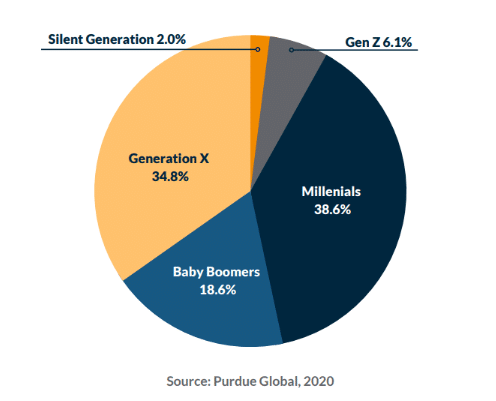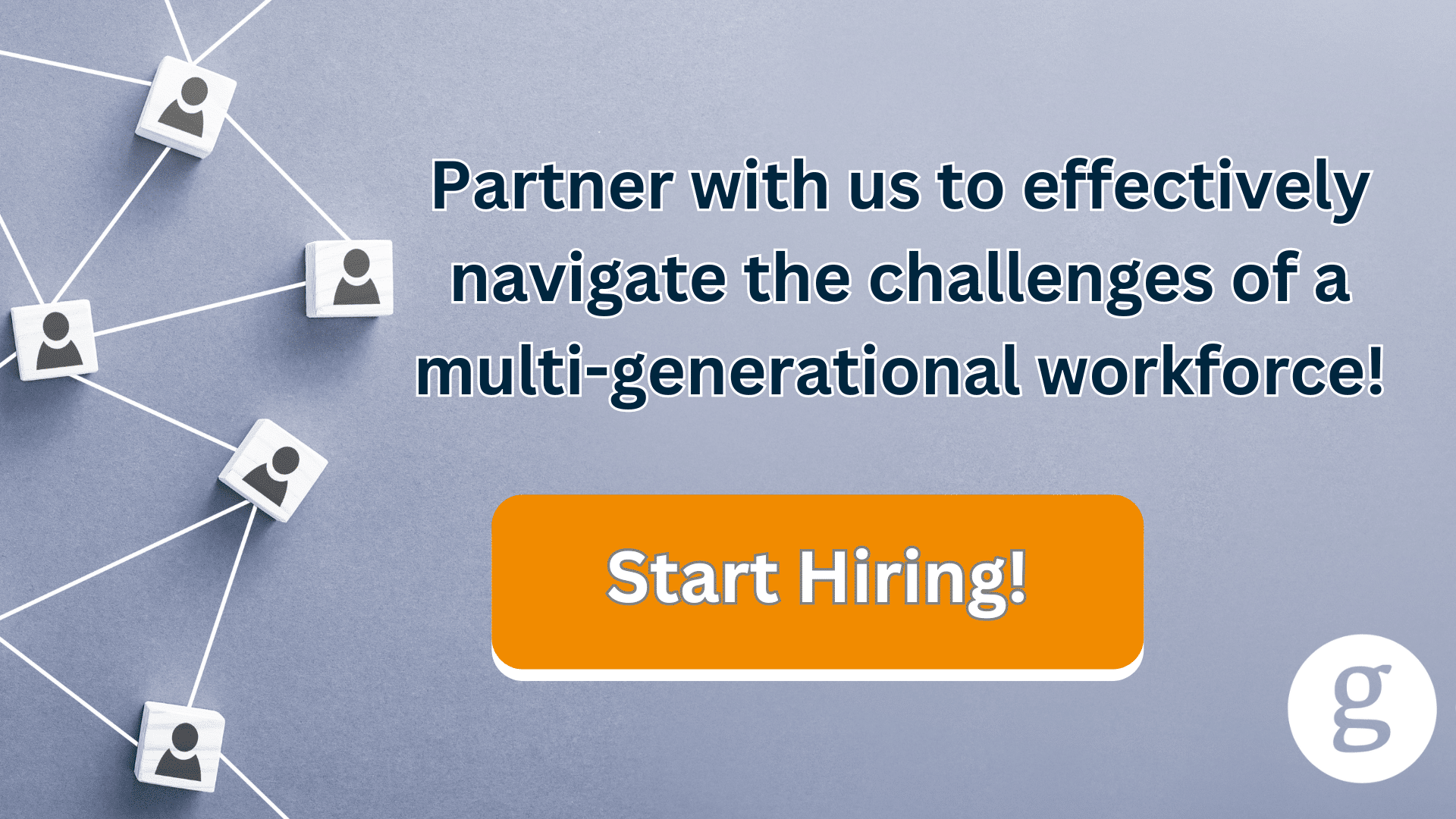"Embrace the wisdom of the old and the energy of the young; together, they create a workplace of endless possibility."
The Superpower Workforce: Unlocking Innovation Through Multi-Generational Collaboration
In today's workforce, employers are managing five generations working side by side, each with its own unique characteristics and preferences. It's like leading a diverse team of superheroes, each with their own special powers! Understanding these differences is key to boosting collaboration, knowledge sharing, and innovation. When employers create a culture of respect and appreciation for these diverse perspectives, that is when the magic happens!
Recognizing the strengths of each generation allows us to harness our collective wisdom, driving success and growth. Think of it like assembling the Avengers - when everyone brings their unique skills to the table, you can tackle any challenge that come your way. With five generations working side by side, the talent pool for organizations in the U.S. is more diverse than ever. Let's take a closer look at the defining traits of each generation:
Traditionalists (born before 1946): Traditionalists value loyalty, respect, and face-to-face communication. They bring with them a wealth of experience and knowledge accumulated over years of work. While they may not be as comfortable with technology as younger generations, their dedication and work ethic are unparalleled.
Baby Boomers (born 1946-1964): Baby Boomers are known for their strong work ethic and dedication to their careers. They value stability, job security, and loyalty. Baby Boomers prefer in-person communication and face-to-face interactions, often relying on traditional methods of communication.
Generation X (born 1965-1980): Generation X is characterized by its adaptability and independence. They value work-life balance, flexibility, and opportunities for growth. Comfortable with technology, Gen Xers have adapted to technological advancements in the workplace and are known for their resourcefulness.
Millennials (born 1981-1996): Millennials, also known as Gen Y, make up the largest portion of today's workforce. They value flexibility, purposeful work, and work-life balance. Millennials are digital natives, comfortable with technology and social media, and prefer digital communication over traditional methods.
Generation Z (born 1997-2012): Generation Z is just entering the workforce, bringing with them a new set of values and preferences. They value diversity, inclusion, and social responsibility. True digital natives, Gen Zers are comfortable with technology and prefer digital communication channels. They are poised to bring fresh perspectives and innovative ideas to the modern workplace.
Effective communication, flexible work arrangements, and mentorship programs are the secret weapons for bridging generational gaps and creating a harmonious work environment where everyone can thrive. By embracing the diversity of our multi-generational workforce, you can leverage the unique talents of each generation to achieve your business goals and stay ahead in today's rapidly changing landscape. Together, you're unstoppable!

Beyond the Label: Moving Past Generational Stereotypes for a More Inclusive Workplace
Understanding the stereotypes associated with each generation can help to navigate and bridge the gaps in today's multi-generational workforce. By recognizing these stereotypes, we can work towards creating a more inclusive and harmonious workplace environment. It's essential to remember that while stereotypes may contain grains of truth, they don't define individuals within each generation. Instead, they provide a starting point for understanding and managing differences. To effectively manage a multi-generational workforce, employers can implement strategies such as mentorship programs, cross-generational teamwork, and tailored communication approaches. By fostering open dialogue and mutual respect, organizations can leverage the unique strengths of each generation while mitigating potential conflicts. Let's take a closer look at some common stereotypes and characteristics attributed to each generation:
Silent/Traditionalists
- Conservative, disciplined, loyal
- Risk averse and use caution when making career decisions
Baby Boomers
- Technologically challenged
- Resistant to change
- Workaholic
Gen X
- Cynical, disengaged, slacker mentality
- Job hoppers
- Tech-savvy but not tech-dependent
Gen Y
- Entitled, narcissistic
- Job hoppers
- Overreliant on technology
Gen Z
- Tech-dependent
- Impatient, demanding
- Lack of work experience
The Power of Diversity: Why Creating an Inclusive Workplace Benefits Everyone
A Look at Generational Experiences for Women and Minorities in the Workplace
Workforce Numbers in the U.S. (%)

Bridging the Digital Divide: How to Equip a Multi-Generational Workforce for Success
Beyond Age: Understanding What Drives Each Generation in the Workforce
Decoding Generations: How to Build a Thriving Multi-Generational Workforce
Understanding the diverse needs, preferences, and motivations of employees from different generations is crucial for hiring managers striving to create an inclusive and productive work environment. Tailoring benefits, perks, and work arrangements to meet the unique characteristics of each generation not only enhances job satisfaction and engagement but also contributes to increased retention of top talent. By fostering a work culture that values diversity and inclusion, hiring managers can promote innovation, productivity, and create a supportive environment where all employees can thrive.
Here are some key insights to takeaway:
- Tailored Approach to Employee Benefits and Perks:
- Recognize that different generations have unique preferences, values, and motivators.
- Tailor benefits, perks, and work arrangements to meet the diverse needs and preferences of employees from different generations.
- Higher Job Satisfaction and Greater Engagement:
- Understanding and addressing the specific motivations and interests of each generation leads to higher job satisfaction and greater engagement among employees.
- This, in turn, contributes to increased productivity and performance within the organization.
- Increased Retention of Top Talent:
- By addressing the diverse needs and preferences of employees, hiring managers can increase retention of top talent.
- Creating a work environment that resonates with employees from all generations fosters a sense of loyalty and commitment.
- Promotion of Diversity and Inclusion:
- Fostering a work culture that values diversity and inclusion is crucial.
- Promoting diversity and inclusion enhances productivity, promotes innovation, and creates a supportive environment where all employees can thrive.
Overall, understanding the interests and motivations of different generations in the workforce allows hiring managers to create an inclusive and productive work environment, leading to higher job satisfaction, greater engagement, increased retention of top talent, and overall organizational success.



































